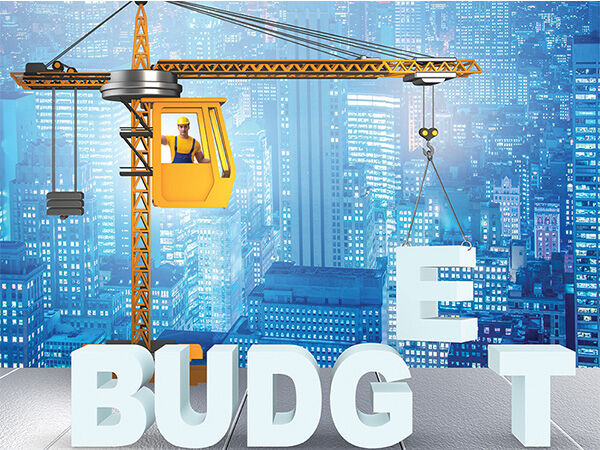Budget Building 101
by Stephanie Hintz
In a story published on their website, the U.S. Small Business Administration (SBA) addresses building small business budgets as "difficult to plan and maintain at the best of times."
Now, this lead couldn't make this task sound any more daunting, right? Perhaps, but from a different perspective it illustrates the importance of this not-so-fun element of operating a small business venture. Budgets are critically important because they help manage costs and determine whether profit goals are within reach. Plus, establishing and following your budget can help you stay on track from month-to-month.
One way you can stay the course with your business vision is to build and maintain a budget. If you have never written a formal budget for your business, now is the time to do so. Before you make money, you should have a plan in place on how you will spend it. Budgets can help spell out new business start-up costs, track operation costs, identify the revenue needed to support your business, and predict a realistic estimate of projected profits.
Artists and craftspeople need to structure budgets; it could make the difference in the growth of your business. By having a budget in place, you can better adjust to unexpected costs, changes in operation, or market instability.
The Components of a Budget
There are three main components of any budget: revenues, expenditures, and cash flow. Small business owners should prepare a budget annually--and revisit it often. Budgets should be divided into 12 months. If you are established with more than one year of operation--no matter how small you are--you can use the previous year's sales as a starting point. Experts advise to take a conservative approach when projecting future sales. If you are brand-new and launching your business in the future, do your homework and ask other artists or craftspeople in your field and do some market research.
Once you've estimated your potential sales for the year, you need to account for your total costs and expenditures. Divide your expenses into three categories: fixed, variable, and semi-variable. Semi-variable costs are those expenses that have both a fixed and variable component to them. Enter your fixed expenses as listed and average your variable and semi-variable expenses and input these figures for each month.
Next you can analyze your data and come up with a projected profit (or loss) for your business for the following year. You may have to go back and forth a bit and make cuts to meet your budget, and that's ok. It is better to see what impact some purchases and expenses may have on the big picture before you start spending for the next year. Don't factor in landing large accounts, for example, a large wholesale buyer, if they haven't signed a contract. The buyer may experience their own cash-flow shortage down the road or may have overestimated their buying power.
Common Obstacles You Can Conquer
Of course, no business plan or budget is static; it is a living, evolving creature which is subject to a number of obstacles, such as unexpected events, cash flow problems, and supply issues. As a small business owner, it is how you react to these hardships that will determine your resiliency.
Every business needs to anticipate unexpected expenses--which should be built into your budget as a contingency fund. Having a little nest egg built up and keeping a strong credit rating are two ways you can be proactive against unexpected costs and still remain viable. Murphy's Law says that "anything that can go wrong will," and your business is not immune.
Sometimes you may run into cash-flow problems--and in your first few years of business this is highly probable. When cash flow is unstable your business lacks the ability to grow, find money for innovation, or even pay basic bills.
You may also find roadblocks in staying on your budget if you encounter raw materials or supply shortages or price increases--which may affect your profit margins. Always keep an eye out for alternative sources for supplies and materials and shop around for components or findings that you don't make yourself.
Three Types of Expenses
- Fixed: rent/mortgage, equipment purchases, loan payments, advertising, salaries, website maintenance and hosting costs, insurance, monthly memberships or subscriptions, and licenses
- Variable: packaging and shipping, raw materials, pre-made inventory, hourly wages, credit card processing fees, charitable donations, entertainment, and travel costs
- Semi-variable: utilities, phone/internet, office supplies, equipment leases, vehicle maintenance, and wages plus commissions
Keep Your Cash-flow Moving
- Plan and manage cash inflow and outflow
- Get strict in collecting outstanding payments owed to your business
- Bill promptly, accurately, and consistently
- Offer small discounts for payment-in-full, especially on commissioned projects
- Increase the deposit amount or percentage needed for commissioned projects
- Raise your prices
- Up-sell to your customers
- And, follow your budget!
Manage Your Finances
- Start with a balance sheet
- Pick a method of accounting (accrual or cash)
- Get accounting help
- Manage business credit
For more information visit
www.sba.gov/business-guide/manage-your-business/manage-your-finances
Have a question regarding this article? Email Customer Service.
Copyright Permissions
All works of authorship (articles, videos, tutorials and other creative works) are from the Fire Mountain Gems and Beads® Collection, and permission to copy is granted for non-commercial educational purposes only. All other reproduction requires written permission. For more information, please email copyrightpermission@firemtn.com.

